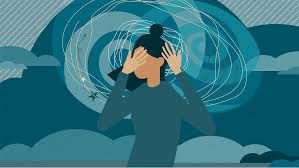The Forgotten Inclusive: Why PTSD Is Still Taboo in ‘Woke’ Workplaces

By Rose Byass
In recent years, many organisations have taken great strides to promote diversity and inclusion. Flags go up for Pride Month, pronouns appear in email signatures, and hiring targets are set for neurodivergent candidates. Workplaces speak of “bringing your whole self to work”—but there’s an uncomfortable truth buried beneath this well-meaning movement: not all forms of identity or mental health are equally accepted. While companies celebrate those who identify as non-binary, autistic, queer, or even, in extreme expressions, as animals or fluid beings beyond gender, individuals living with Post-Traumatic Stress Disorder (PTSD) are often treated with suspicion, discomfort, or outright discrimination. It begs the question: why is PTSD still stigmatised in workplaces that claim to be inclusive?
The Rise of the ‘Woke’ Workplace
Let’s begin by acknowledging the progress that has been made. Once rigid and hierarchical, many workplaces are now embracing flexibility, emotional intelligence, and diversity of thought. Mental health is discussed more openly, with Employee Assistance Programs (EAPs), mental health days, and workplace well-being initiatives increasingly normalised. These are all positive changes. Inclusivity efforts now encompass gender identity, sexual orientation, and neurodiversity. It’s not uncommon to see hiring campaigns aimed at autistic individuals, people who identify as LGBTQIA+, or even employees who challenge traditional social norms. Some companies have adopted “furry-friendly” policies or support team members who identify beyond binary concepts of gender—efforts that aim to support authentic self-expression and belonging. But in the shadows of this progress lies a gaping hypocrisy. When someone reveals that they are living with PTSD—a well-recognised, debilitating, and potentially invisible psychological condition—they are often treated as a risk, not a strength. The welcome mat is quietly withdrawn. Suddenly, the individual becomes “too fragile,” “unstable,” or “unfit” for the role they’ve been doing competently all along.
PTSD: A Legitimate, Prevalent Condition Still Marginalised
Post-Traumatic Stress Disorder is not rare. In Australia, approximately 12% of people will experience PTSD at some point in their lives, and over 1 million Australians live with the condition at any given time (Phoenix Australia, 2020). It can result from a range of experiences: domestic abuse, sexual assault, bullying, workplace trauma, combat, accidents, or witnessing violence. And yet, PTSD remains poorly understood and often feared in the workplace. There is a tendency to associate PTSD with volatility, unpredictability, or weakness. Rather than seeing the resilience and survival behind the diagnosis, many employers focus on imagined liabilities or future performance risks. It becomes a red flag—not a badge of courage. Contrast that with how many workplaces elevate and even celebrate neurodivergence or gender diversity. An employee on the autism spectrum who prefers no eye contact or avoids social events may be accommodated without question. A colleague who transitions genders or uses “they/them” pronouns may receive company-wide pronoun education, HR training, and revised systems. These are commendable acts of inclusion.But if a staff member quietly discloses they are dealing with trauma flashbacks, hypervigilance, or anxiety due to PTSD, they are often met with silence, avoidance, or procedural stonewalling.
The Double Standard of Psychological Safety
Let’s be clear: this is not an argument against inclusion for neurodiverse or gender-diverse individuals. Their rights matter. Their visibility matters. Their inclusion matters. The issue is that psychological safety is being selectively applied. If a person identifies as gender-fluid, employers are often quick to change systems, email formats, and office signage. If a person identifies as autistic, organisations may offer flexible hours, quiet workspaces, and non-traditional interview formats. But when someone with PTSD needs a trauma-informed supervisor, a non-toxic culture, or reduced exposure to bullying, they’re told “that’s not a reasonable adjustment,” or worse, they’re seen as a problem to be “managed out.” There’s a tragic irony here: workplaces that embrace the language of “mental health inclusion” often fail to include those most in need of psychological support. PTSD doesn’t fit the neat marketing image of corporate diversity campaigns—it’s messy, invisible, and, at times, confronting. But it’s real. And it deserves respect.
"Bring Your Whole Self—Unless You’re Traumatised"
“Bring your whole self to work”—this mantra rings hollow for employees with PTSD. It’s easy to celebrate identities that don’t challenge the system. It’s easy to honour differences that are external, observable, or don’t demand introspection from leadership. But PTSD is different. It asks us to confront the truth that workplaces themselves can cause trauma. It demands accountability. For example, a woman exposed to sustained workplace bullying, gaslighting, and exclusion may develop PTSD. When she raises her concerns, she is told “it’s just personality clashes,” or “we didn’t know you were struggling.” Worse still, she may be blamed for being “too sensitive,” “emotional,” or “unstable.” And yet, those same leaders may proudly champion a neurodiverse hiring initiative. Why? Because it’s safe. Because it looks good. Because there’s no need to examine the culture that broke her in the first place. One case revealed the truth starkly: after raising concerns about bullying and being triggered by a co-worker’s perfume—connected to past trauma—the employee was dismissed as dramatic. No investigation was properly conducted. Behind closed doors, leaders quietly suggested they wouldn’t have hired her had they known she had PTSD. This isn’t inclusion. This is discrimination, dressed in the garb of risk management.
Mental Health Hierarchies: Who Gets Seen and Who Gets Stigmatised
In modern workplaces, a hierarchy of mental health has emerged. Some identities are trendy, visible, and celebrated—others are inconvenient, uncomfortable, and erased. We’re comfortable talking about neurodiversity, provided it comes with savant-like abilities or productivity benefits. We’re increasingly comfortable with gender diversity, especially when it’s framed as courage and identity. But we’re deeply uncomfortable with trauma—especially trauma that stems from our own workplace environments. PTSD forces organisations to confront their failures: toxic cultures, bullying leaders, unchecked aggression, and dismissive HR practices. It challenges the illusion that all workplaces are safe. And that’s why it’s often pushed underground.
Disclosing PTSD: A Career Death Sentence?
Legally, employees are not required to disclose PTSD unless it materially impacts their ability to perform their role or poses a health and safety risk. But morally, many feel compelled to be transparent—seeking adjustments, understanding, or simply honesty. That transparency often backfires. Once PTSD is disclosed, employees may be:
- Denied advancement or seconded to lesser roles
- Excluded from key meetings or projects
- Discredited in workplace conflicts (“She’s just triggered”)
- Labelled as high-risk or too complex
- Slowly performance-managed out
This silent discrimination is far more insidious than overt hostility. It cloaks itself in concern, policy, and proceduralism. “We just want to make sure you’re okay.” “We have to consider team dynamics.” “We’re just assessing fit.” In reality, it’s workplace exclusion masquerading as duty of care.
What Real Inclusion for PTSD Should Look Like
If workplaces are serious about inclusion, they must include everyone. That includes trauma survivors. That includes people with PTSD. That includes those who have experienced harm inside the organisation—not just those who bring trendy differences from outside. Here’s what real inclusion looks like:
- Trauma-informed leadership: Managers are trained to recognise trauma responses and respond with empathy, not suspicion.
- Safe disclosure pathways: Employees can share mental health conditions without fear of reprisal or career sabotage.
- Adjustments without judgment: Reasonable accommodations are provided (e.g., quiet spaces, flexible work hours, psychological support).
- Zero tolerance for gaslighting and bullying: These behaviours are recognised as psychosocial hazards—not just “tough personalities.”
- No mental health hierarchy: All conditions are respected, whether they fit the inclusivity trend or not.
Conclusion: Inclusion Must Be Equal—Or It Isn’t Inclusion at All
If you’re a workplace leader celebrating inclusion and equity, take a hard look in the mirror. Are you embracing diversity—or just the forms of diversity that are easiest to market? PTSD is not a weakness. It’s not contagious. It’s not dangerous. It’s a valid psychological condition that many people live with—often silently. The same resilience that helped someone survive trauma is the resilience they bring to your workplace. They are not broken. They are not too much. They are human. If your workplace can accommodate a colleague who identifies as non-binary, who struggles with social interaction, or who dresses in ways that challenge convention—then you can accommodate someone who has flashbacks. Or who needs to sit in a quiet room. Or who was broken by a system you built and is now trying to rebuild themselves inside of it. Inclusion cannot be selective. Otherwise, it’s not inclusion at all.


